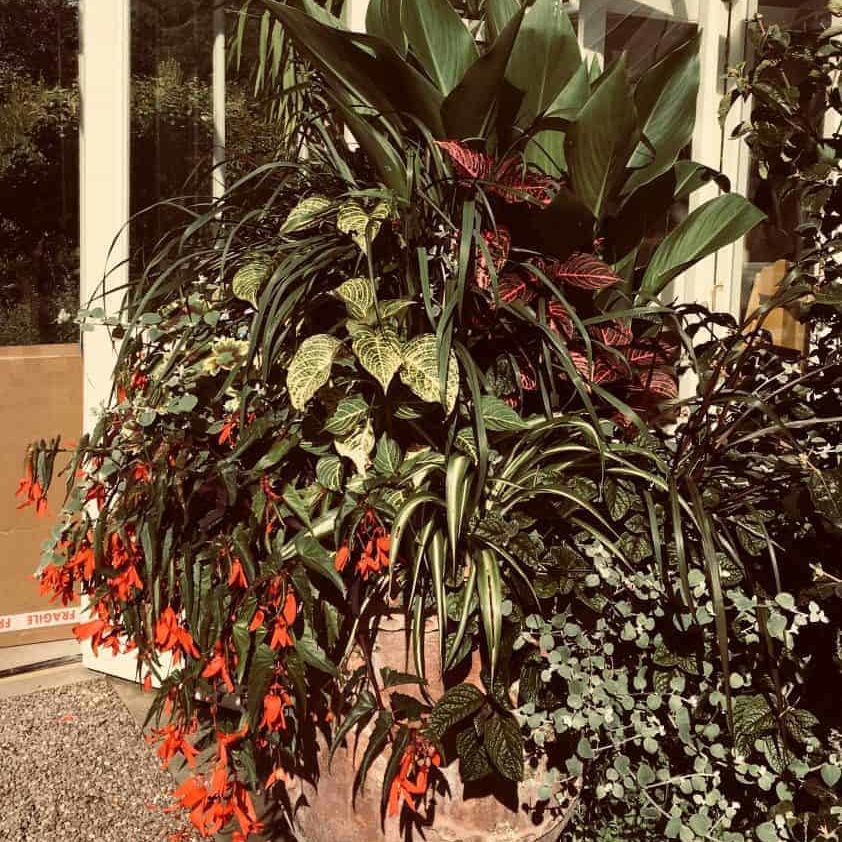Undoubtedly we should be planting more hedges. especially in urban gardens where they form important corridors for wildlife as well as providing food and shelter for birds, small mammals and beneficial insects. They can also provide us with produce in the form of fruits and nuts and are an attractive screen or boundary. They are well worth the time and effort put in to establishing and maintaining.
Buying plants during the dormant season (between November and March) when they are sold ‘bare root’ is a very economical way of purchasing young trees and shrubs that grew out in ‘the field’ on the nursery. This means that they grow in rows directly in the ground. They are lifted to order at one or two years old, once the leaves have fallen in the autumn. They are then bundled up and sold, usually in bundles of 25. These can cost around 50p – £1.50 each, depending on variety.
These young trees are easy to plant. They just need a ‘slit’ trench – created by slicing into the ground with a spade and pulling the soil back – sticking the tree roots into the hole and firming in with your foot. If the roots are very well developed you may need to trim them or dig a larger hole.
If your soil is very poor then a pinch of mycorrhizal fungi in the hole will help them to establish. Finish off with a cane for support and a rabbit guard if you are planting in a rural area. To encourage a bushy hedge you also need to cut 1/3 off the top of the stem to promote lateral growth right from the base. If you plant in winter they should not need too much watering. You should either mulch around the base or use weed control mats to reduce competition and ensure that your plants get off to a good start.
To make a thicker hedge you can plant a ‘double staggered row’. You get a deeper barrier and quicker establishment of your boundary. It will take 3-4 years for your hedge to become fully grown. You’ll need to cut it back each year to keep promoting the lateral branching and thickening of the hedge. Do this in late winter, cutting 1/3 off the ends of the last year’s growth, until you reach the desired height.
It is mainly deciduous varieties of trees that can be bought as bare root stock. This is because evergreens do not go into dormancy. These soon struggle if dug up as they retain their foliage all year round. Thereby quickly losing water through their leaves. However, it is possible to buy Box and Laurel bare root from specialist nurseries. Common deciduous varieties include beech and copper beech, oak, Berberis, Cornus, wild rose, willow, poplar, alder, maple, hornbeam, Viburnum lantana, crab apple.
To buy bare root hedging plants you’ll usually need to go to a wholesale tree nursery. Some garden centres stock a couple of common varieties. Bare root trees have a very short shelf life and are usually lifted to order. Some wholesale nurseries may have a minimum order value but many have a cash-and-carry department. You can go to these as a private customer and still benefit from trade prices.
Caroline Wright
Caroline brings decades of horticultural experience, both practical and theoretical. Having lectured at Brackenhurst Horticultural University for many years, Caroline has now relocated to France and is following her passion for growing plants and teaching. Caroline and her husband Paul run the plant nursery, propagating all of the plants themselves and lead a wide selection of fun and interactive horticultural and craft based courses.


